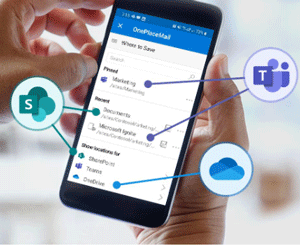How organisations can increase the pace of communications for better collaboration and efficiency

Despite the plethora of alternatives, nothing has yet completely replaced email for business communications, especially for businesses communicating with other businesses. Important documents including contracts, requests for proposal and plans are all usually sent as email attachments. Email provides a relatively fast, secure, and efficient way of communicating, especially compared with the days when businesses had to courier these documents to each other or send them via fax without knowing for certain who was at the other end.
However, using email to send important documents and updates back and forth also comes with some risk. Chiefly, when the email recipient doesn’t see their email in a timely fashion, important deadlines can be missed. If the email is sent to just one contact in a company, then there is the risk that not everyone in the team will be aware of key information. And, when team members have to forward information to each other, it slows down the pace of communication, duplicates content, and makes collaboration cumbersome and ineffective.
Cameron Dwyer, chief technology officer, OnePlace Solutions, said, “In an era of digital transformation when everyone expects instant responses, competing effectively means businesses simply have to move faster and more accurately. Moving conversations from slow-paced email interactions to fast-paced collaborative environments such as Microsoft Teams can dramatically increase an organisation’s ability to compete. Moreover, it can reduce the risk of errors and of failing to respond in a timely fashion to threats and opportunities alike.”
This need to communicate faster and more accurately has seen the rise of collaboration-facilitating platforms such as Microsoft SharePoint and Microsoft Teams. These platforms create central sources of truth and trusted content where groups of people working on a project can access documents and work on them simultaneously, avoiding version control issues, improving visibility, and helping people to work together more effectively. This lets people shift their communications from email to a faster-paced Teams conversation as appropriate, empowering the user to use the most effective tool for collaboration based on the nature of the communication and audience.
Typically, when people receive emails regarding a project, they save the attachments into this shared repository so that at least the key documents are readily accessible. However, the emails themselves are commonly left in the recipient’s inbox. Although they technically can be saved across to SharePoint, many users often find the process unwieldy. When this happens, important communications can go unseen by the rest of the team.
Cameron Dwyer said, “Effective collaboration depends on every team member having access to the same information at the same time. Therefore, it’s essential to save not just the attached documents but also the emails themselves into SharePoint. However, if it takes longer than a second or two to do this, many people fail to do it, which compromises the team’s ability to collaborate and work effectively. It can also reduce the return on the company’s SharePoint investment due to diminished adoption by the workforce.
“Organisations should, therefore, consider a solution that makes saving documents and emails to SharePoint as simple as a few clicks. An extension to Microsoft Outlook such as an add-in should save the emails and documents along with their associated metadata to make them easily searchable. Once the documents are in SharePoint or Teams, they can have the same workflows, security and permissions applied to them as any other file, keeping them accessible and secure. When sharing information, users can insert content from SharePoint or Teams in an intuitive manner during the flow of creating the email, and can find the content they need quickly as a result of personalisation and the power of metadata.
“The add-in should operate extremely quickly and complete its operations in the background for minimal disruption for the user. Once the email and/or documents are saved into SharePoint, an icon should appear in the user’s inbox to let them know that they’ve processed that item successfully.
“It’s essential to make this one fluid process to ensure that people don’t see it as a burden but, rather, as a time saver and productivity enhancer. And, importantly, the add-in must work just as seamlessly using a mobile device as it does with a desktop device so that team members can keep projects moving fast even if they’re on the road. Turning previously-slow communications into a fast-paced collaborative process using this add-in is simple and intuitive, and can significantly improve an organisation’s competitiveness.”
OnePlace Solutions is offering the OnePlaceMail App for free until June 30, 2020 on the Microsoft Apps Store.
The free offer will include all product features, including:
- saving emails and attachments to SharePoint, Teams, and OneDrive
- classifying content with the automatic capture of email attributes and any other metadata as per your SharePoint environment
- ability to insert from SharePoint, Teams, and OneDrive as either links or attachments.
https://www.oneplacesolutions.com/
